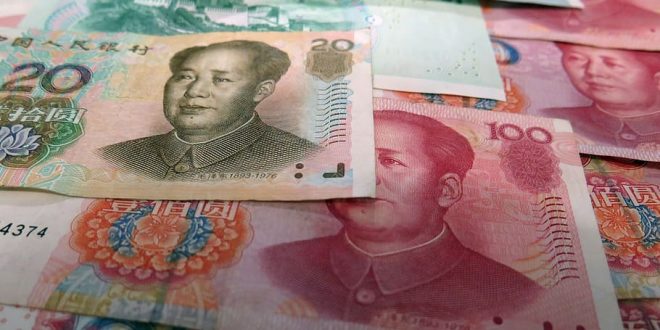The size of China’s economy was $17.7 trillion in 2021, according to official figures, so 5.5 percent growth would mean about $1 trillion more in 2022. Using growth in 2019 as a basis for comparison, business investment in China would need to contribute about 1.5 percentage points toward the 5.5 percent growth Beijing promises this year.
Because net exports are likely to be negative and consumption is likely to decrease, investment would need to contribute even more, around 2.5 percent, to growth this year. But nearly half of all growth in business investment in recent years has been related to the property sector.
The authorities tolerated this overinvestment despite the risks in order to achieve political growth targets, leaving the largest property developers in debt default crises. There is no logical way investment can add 1.5 points to GDP growth in 2022, let alone 2.5 percent. In “sunrise” higher-tech industries, a series of unanticipated new regulatory moves has frightened away investors. New business starts by entrepreneurs have dried up and are in deeply negative territory.
Household and government consumption combined would need to add about 3.5 percentage points in 2022 toward the 5.5 percent growth target. But with almost 100 million consumers in lockdown from COVID-19 outbreaks, retail activity is frozen.
Promising high-tech, job-creating sectors are shedding employees owing to government interventions aimed at control, reducing income growth and hence consumption potential. And local governments have shrinking resource bases to support their spending, since they were ordered to stop selling land to property developers but don’t have permission to replace that lost revenue by raising taxes or imposing new ones. Local officials are now being told to do what was condemned not long ago: quickly issue special revenue bonds without concern for repayment.
Even a municipal debt binge cannot offset the fall in the housing bubble and the consumption slowdown that resulted from COVID-19. It looks as if it will be hard to replicate even last year’s base of consumption expenditure, let alone grow it by hundreds of billions of dollars.
Since the United States labeled China and several other illiberal countries as strategic competitors, Washington has used economic tools with increasing boldness in its commercial and national security dealings with China. More forcefully in response to Russia’s war on Ukraine, this willingness to contemplate decoupling from other major powers, marked the end of permissive US engagement with these countries.
To rally support for this strategic shift, US officials and security analysts have emphasized the most intimidating aspects of China’s behaviour and rhetoric, characterizing Beijing as the “pacing threat” to the United States in all domains.
China’s leaders and their factotums have helpfully provided all the evidence needed to substantiate the sense of rivalry. The Chinese Communist Party has committed to maintaining an annual economic growth rate of between six and eight percent, which would allow China to easily pass the United States in GDP by the end of the 2020s.
That economic growth, the CCP has made clear, will directly support a major increase in defense spending. Meanwhile, China’s Belt and Road Initiative and other overseas financing programs aim to pull perhaps 100 nations into an orbit with Beijing as the center of economic gravity. Beijing will continue to compel Chinese companies to master and indigenize all strategically important technologies, with the goal of eliminating reliance on foreign capabilities within a few years.
This portrait of a Chinese juggernaut warrants Washington’s urgent steps to reinvest in competitiveness, ensure the United States can parry China’s spending on defense, and tighten permissive rules for US companies that Beijing has exploited for strategic gains. The United States and other liberal democratic states have made strides over the past decade in recognizing China’s ambitions and their implications for the global economic balance of power. But by not challenging the narrative of the inevitable rise of China and the inevitable decline of the United States, Americans are needlessly doing the CCP’s marketing work.
China’s rise is inevitable; in fact, a long-term economic slowdown is unfolding. Rather than willfully disregard this reality, the United States should talk about it. Policymakers across the world have taken Washington’s silence about the risks to China’s economic outlook as evidence that Chinese President Xi Jinping is telling it straight when he says that the CCP is in control and has a 100-year plan to put China on top.

 Noor Trends News, Technical Analysis, Educational Tools and Recommendations
Noor Trends News, Technical Analysis, Educational Tools and Recommendations




